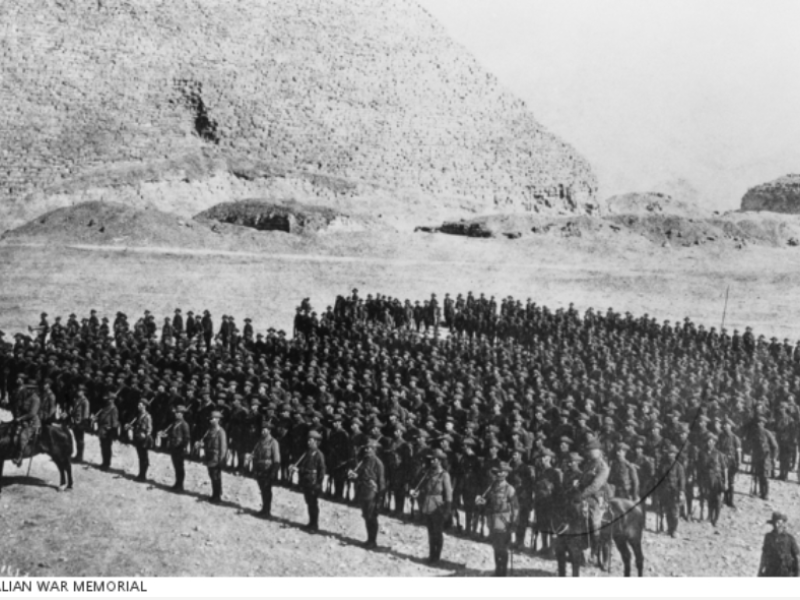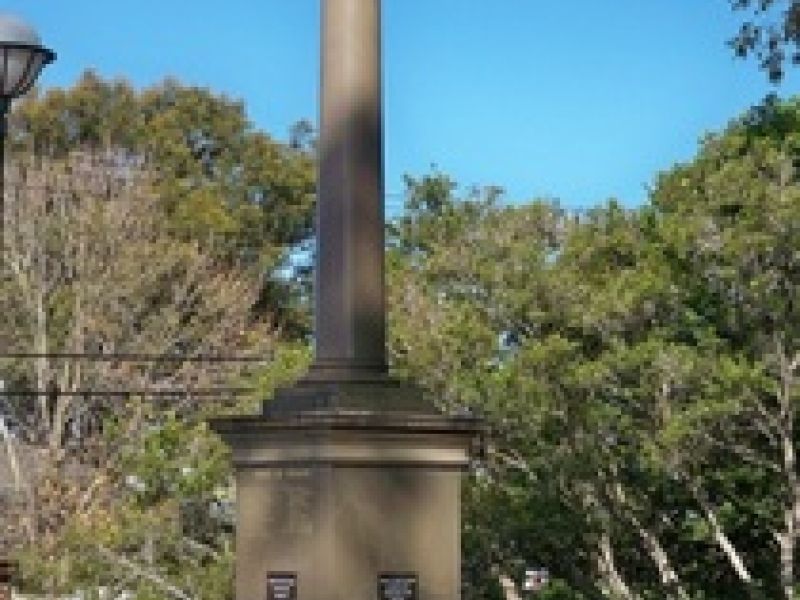Private Raymond Leslie Goldsmith, 3rd Battalion, AIF
Raymond “Ray” Goldsmith was born in 1894, the second son of Ernest and Eliza Goldsmith, a pioneering family that had been in the Wyong district, New South Wales, for several generations.
Ray was educated at the local public school and was “always a keen sport, indulging a good deal in football and fishing”. He was over six feet tall and, somewhat unusually, was tattooed, bearing flags and a heart on his left upper arm. He later moved to Yass to work on the railway duplication works in 1914.
Ray’s great-grandfather had a service medal from fighting in the Crimean War in the 1850s. When the First World War broke out, Ray enlisted in the Australian Imperial Force shortly after. He wrote to his mother, saying, “Mother, it is my duty to go. My great grandfather fought for us in the Crimean War, and I deem it my duty to help the Empire.”
Ray Goldsmith was posted to the 3rd Battalion, and sailed with the first contingent on 19 October 1914. He arrived in Egypt in early December, and continued training in the desert.
The 3rd Battalion were part of the second and third waves of the Gallipoli landing on 25 April 1915. The men rushed ashore to secure the shaky front line on the heights above the beach, and spent the following days establishing a position.
On 19 May, the Turks launched a major counter-attack to try to remove the Australians. During this attack, Private Goldsmith was shot in the right shoulder, and was evacuated from the peninsula.
Goldsmith returned to Gallipoli on 26 June 1915 where the 3rd Battalion were defending the front line, with short periods of rest in the limited space available out of Turkish reach.
On 25 July, Private Ray Goldsmith was struck in the head by shrapnel from a bursting Turkish shell.
He was not immediately evacuated but was treated on the peninsula. His wounds proved too severe, however, and he died on 1 August 1915.
In Australia, Ray’s mother Eliza received a message in August to say her son had been wounded, and the next day a second message arrived to say he was dead.
She wrote to Senator George Pearce, saying, “I know I am only one mother among many thousands that are mourning for their beloved soldier sons, but I would be extremely grateful if you could get any information for me regarding the last days of my darling son … it would be a comfort to me to know the nature of his wounds and where he died and was buried.”
There was little information to send to Eliza Goldsmith, although authorities later ensured the family received pictures of Ray’s grave.
Ray Goldsmith was buried in Beach Cemetery, Anzac, where he lies today under the words “in memory of [the] loved son of Mr & Mrs Goldsmith, Wyong”.
He was 21 years old.
Meleah Hampton, Historian, Military History Section
Image: Members of the 3rd Battalion AIF assembled on parade. December 1914.

 Australian War Memorial
Australian War Memorial